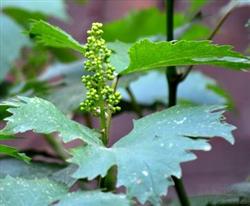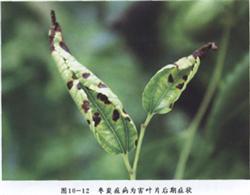How to identify and control jujube rust

(1) symptoms: jujube rust only harms leaves. At the initial stage, there are light green dots scattered on the back of the leaves, and then gradually protruding into a dark yellow, that is, a pile of germ summer spores. The shape of the summer spore pile is irregular and mostly occurs on both sides of the midrib, leaf tip and base. Yellow summer spores are scattered after the surface of the lesion is ruptured. There are small green dots on the front of the leaf corresponding to the summer spore pile, the edge is irregular, and the leaf surface is mosaic. Finally, the leaves withered and fell early, so as to weaken the tree potential and reduce the yield and quality. (2) incidence regularity: jujube rust is a disease caused by fungi. Generally, the disease began in the middle and late July, and a large number of summer spores appeared from late August to September, which invaded again, entered the peak period of the disease, and began to shed leaves. There is a lot of rainfall from August to September, which is beneficial to the occurrence of the disease, and the incidence is mild in the dry year. (3) Control measures: ① should strengthen cultivation management. Reasonable close planting, pruning over-dense branches, improving ventilation and light transmission conditions, strengthening fertilizer and water management, eliminating stagnant water, and preventing orchards from being too wet can reduce the occurrence of diseases. ② spray protection. The occurrence of jujube rust could be effectively controlled by spraying one time in July, one time in July, and one time in July, and then spraying one more time after one month.
- Prev

Key points of Spring Grape Management
Spring is the season of sprouting and spreading leaves, elongating branches, heading, blooming and fruiting of grapes. How to strengthen the management of grape in spring and improve the yield and quality of grapes is a common concern of fruit farmers. The following focuses on the main management of grapes from February to April. January, the sprouting period from mid-February to early March: irrigation of budding water.
- Next

How to control jujube anthracnose
First, the symptoms: the infected fruit first appeared reddish-brown spots, then the disease spot gradually enlarged, surrounded by a light yellow halo ring, and finally the disease spot color became dark brown, slightly sunken but then expanded slowly, and the shape of the disease spot was diversified, such as round, oval or fusiform. The flesh in the spot changes from green to brown and necrotic.
Related
- Moge, come on! The staff of the peasant association in the producing area of cantaloupe were frightened when the crowd gathered.
- Causes and Solutions of low Fruit setting rate of Apple
- Symptoms and control measures of passion fruit virus disease
- Fruit growing lesson: how do apple orchards keep high yields?
- Can you build orchards in the mountains? What are the pros and cons?
- How to manage the coloring period of Crisson grape?
- This paper introduces the processing technology of two kinds of fig products.
- How much is a month for retired teachers in rural areas by 2020?
- How can strawberry planting increase sugar content? We should pay attention to management in many aspects.
- What are the cultivation techniques on how to improve the yield of golden fruit?

